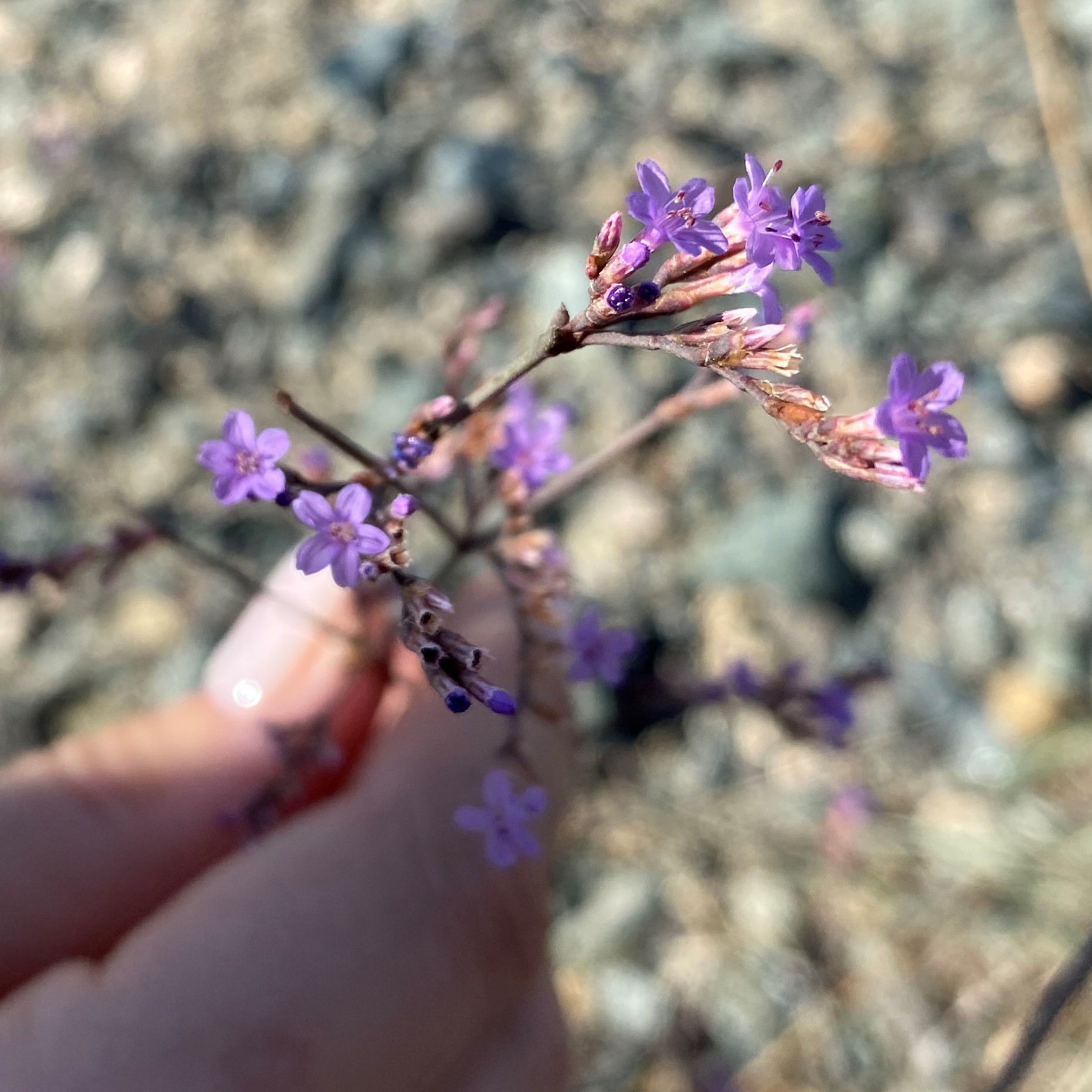Λειμώνιο του Μέγιερ
Etymology of Limonium meyeri: The name "Limonium" originates from the Ancient Greek word "λειμώνιον" [limonion], which derives from the word "λειμώνιος" [limonios], meaning "of the harbour", referring to the coastal areas that many of the genus's species grow. Its epithet, "meyeri" is a tribute to Carl Anton von Meyer (1795-1855), German-Russian botanist and plant collector, and director of the St. Petersburg Botanical Garden.
There are ten Limonium species in Cyprus and one cross-species. The majority of them can be found in South-Eastern Cyprus, in the Paralimni region. At least two of them are endangered.
Limonium meyeri is a perennial that in Cyprus usually appears as 40–80 cm tall, glabrous throughout except for the calyxes. The taproot is stout. The leaves are all radical, fairly numerous, pale green or glaucous-green, subovate to rather broadly elliptic or oblong-obovate, (5) 8–30 (40) cm long and (3) 5–8 (12) cm broad, obtuse, round-tipped or more or less pointed. The branches that are sterile are absent or few or rarely fairly numerous.
Limonium meyeri primarily grows in salty habitats. The specimen of the picture was photographed in Akrotiri, near the salt lake (Lemesos district). It appears at around zero altitudes in southern, southeastern and central-northern Cyprus. Its flowering period is between July and October.
How to identify Limonium meyeri:
Compared to the other Limoniums that can be found in Cyprus, Limonium meyeri has a distinctive characteristic which is its large leaves; they are distinctly nerved, usually 8-30 cm long, with the apex rounded, obtuse or emarginate. Of all the Limoniums in Cyprus, Limonium meyeri's leaves could be the widest ones, usually 5-8 cm broad, as seen in the pictures.





